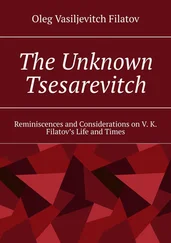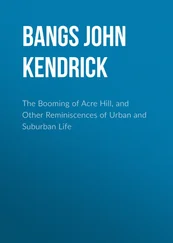John Bruce - The Lettsomian Lectures on Diseases and Disorders of the Heart and Arteries in Middle and Advanced Life [1900-1901]
Здесь есть возможность читать онлайн «John Bruce - The Lettsomian Lectures on Diseases and Disorders of the Heart and Arteries in Middle and Advanced Life [1900-1901]» — ознакомительный отрывок электронной книги совершенно бесплатно, а после прочтения отрывка купить полную версию. В некоторых случаях можно слушать аудио, скачать через торрент в формате fb2 и присутствует краткое содержание. Жанр: foreign_antique, foreign_prose, на английском языке. Описание произведения, (предисловие) а так же отзывы посетителей доступны на портале библиотеки ЛибКат.
- Название:The Lettsomian Lectures on Diseases and Disorders of the Heart and Arteries in Middle and Advanced Life [1900-1901]
- Автор:
- Жанр:
- Год:неизвестен
- ISBN:нет данных
- Рейтинг книги:5 / 5. Голосов: 1
-
Избранное:Добавить в избранное
- Отзывы:
-
Ваша оценка:
- 100
- 1
- 2
- 3
- 4
- 5
The Lettsomian Lectures on Diseases and Disorders of the Heart and Arteries in Middle and Advanced Life [1900-1901]: краткое содержание, описание и аннотация
Предлагаем к чтению аннотацию, описание, краткое содержание или предисловие (зависит от того, что написал сам автор книги «The Lettsomian Lectures on Diseases and Disorders of the Heart and Arteries in Middle and Advanced Life [1900-1901]»). Если вы не нашли необходимую информацию о книге — напишите в комментариях, мы постараемся отыскать её.
The Lettsomian Lectures on Diseases and Disorders of the Heart and Arteries in Middle and Advanced Life [1900-1901] — читать онлайн ознакомительный отрывок
Ниже представлен текст книги, разбитый по страницам. Система сохранения места последней прочитанной страницы, позволяет с удобством читать онлайн бесплатно книгу «The Lettsomian Lectures on Diseases and Disorders of the Heart and Arteries in Middle and Advanced Life [1900-1901]», без необходимости каждый раз заново искать на чём Вы остановились. Поставьте закладку, и сможете в любой момент перейти на страницу, на которой закончили чтение.
Интервал:
Закладка:
The Lettsomian Lectures on Diseases and Disorders of the Heart and Arteries in Middle and Advanced Life [1900-1901]
LECTURE I
Mr. President and Gentlemen, – My first duty this evening is to thank you, which I do most heartily and gratefully, for the honour you have done me by selecting me to deliver the Lettsomian Lectures for the present year. My second duty is to spend as little time as possible on preliminary remarks, for – as you, Sir, know, having yourself occupied this distinguished place on a former occasion – three hours are all too brief for useful presentation of material which one has collected for a purpose like the present. In selecting the subject of my Lectures I was mindful of the character and objects of this Society. In the Medical Society of London there is a fuller blending of men engaged in family practice with men holding hospital appointments than is the case at most of the other learned societies connected with our profession in London; and there is here an opportunity for free communication of experience and interchange of opinion between these two classes of our Fellows which cannot fail to be profitable to both. Therefore, I have taken up a subject of thoroughly practical interest; and not only this, but I will attempt to present it to you, to put you in a position to look at it, from the point of view of the practitioner. The problem of the diseases and disorders of the heart and arteries in middle and advanced life may be said to come before the family practitioner every hour of his work, and to offer difficulties and create a sense of responsibility or even anxiety which are not sufficiently appreciated by the hospital physician. There comes before him the case of one of his patients, an active business man of 45, who has been seized with angina pectoris when hurrying to the station after breakfast, or that of an old friend, whose proposal for an increase of his insurance at 50 has been declined because of arterial degeneration and polyuria; or he is asked to say whether a man of 60, occupying an important and possibly distinguished position in the community, ought to retire from public life because he has occasional attacks of præcordial oppression and a systolic murmur at the base of his heart. What, again, is he to do for the stout, free-living man, just passing the meridian of life, who consults him for weakness and depression, whose heart is large and feeble, and the urine saccharine and slightly albuminous? There is not one of my audience who has not met with such cases as these many times in his practice, and a variety of other cases of cardiac disorder and disease after 40, where the importance of the individuals, the value of their lives, and the gravity of their complaints and their prospects have exercised him very anxiously. What is the prognosis in cases of this order? What can be done for them in the way of treatment? These are the questions which we would desire to answer usefully. The answer, it seems to me, can be given only after an analysis and study of a considerable number of instances of the kind, in respect of their origin, their clinical characters and course, and the result. This is the method of inquiry which I propose to follow. It will be a study of cardio-vascular disease in older subjects from the clinical point of view, and it will be approached not only from the ordinary clinical side as it is approached in hospitals, that is, by an investigation of symptoms and signs, but also and especially in the light of that particular order of knowledge which the family practitioner has learned to appreciate and has so intimate an opportunity to acquire correctly – a knowledge of the origin or causes of the different affections, which it is always difficult, and often impossible, for the hospital physician to ascertain. For the same reason, although, to be complete, a study of the diseases of the circulation at and after middle life should include an account of the post-mortem characters found in fatal cases, and whilst the basis of the account I submit to you will be essentially pathological, I shall not attempt to describe the pathological anatomy and histology of this group of lesions of the heart and arteries. This part of the subject has been remarkably advanced during the last few years; and even if I had the time and the necessary knowledge to deal with it now, I should have nothing original in it to lay before you. Indeed, if I may venture to say so, our attention lately has been too much confined to the pathological states of the heart and arteries and too little directed to the causes which produce them. "Arterial sclerosis" is now an ordinary diagnosis in every-day practice, as if it were sufficient for purposes of prognosis and treatment to have determined that the radial artery is thicker and longer and more dense than normal, without regard to the actual nature of the pathological change, whether strain, or syphilitic, or gouty, or otherwise. And in the same way the phrase "dilatation of the heart" is now in everybody's mouth, irrespective of considerations of its origin. Not only has the profession suddenly woke up to the recognition of a form of enlargement of the heart which was fully described fifty years ago by physicians in our own country, but the public have made "dilated heart" a fashionable disease which calls for the advice of a specialist and an annual visit to a Continental spa. We ought to have advanced beyond this stage of cardiac pathology long before this time. Besides, of how much greater interest is it in our every-day work to study the causes or circumstances that lead up to disease than the simple state of disease itself! And there is in a study of this kind an opportunity afforded to the family practitioner of advancing Medicine – scientific, preventive and therapeutical – as surely as if he were a pathologist in the post-mortem room or laboratory.
Before, however, examining the influences and circumstances which disorder and damage the circulation in middle and advanced life, let us see what the normal or natural state of the heart and arteries is after 40. It has been ascertained that the different parts of the circulatory apparatus pass through certain definite phases of change in the different stages of that decline of existence and energy which leads to senility and ends in death. We have to thank Professor Beneke, of Marburg, for the results of a laborious investigation of this subject which are generally accepted and which I will attempt to summarise. 1 1 F. W. Beneke, 'Die Altersdisposition.'
We should all expect the cardio-vascular system to undergo important changes with increasing age; but few of us would be prepared to find that these changes are neither uniformly progressive nor indeed continuously progressive in the same direction. To make more easily intelligible the nature and as far as possible the origin of these anatomical alterations in the heart and arteries during the second half of life, I will first refer for a moment to the circulation from 20 to 45. During this period of life the blood-pressure is relatively high, reaching its maximum about 36; the aorta and other large arteries increase in diameter from the stress of the blood-pressure on their elastic walls, particularly between 35 and 45, and the heart increases in size year after year at a nearly uniform rate. We have in these facts anatomical evidence of the great functional vigour and activity of the circulation in manhood. At 45, which is practically the commencement of the period with which we are concerned, remarkable changes occur. Whilst the arteries continue to increase in circumference (somewhat more slowly than before), the blood-pressure falls and the heart begins – almost suddenly – to diminish in size; and these three features characterise the circulation for the next 20 years, that is, until the age of 65. How is this fall in the size of the heart to be accounted for? Partly by the widening of the arterial trunks and the consequent fall of pressure. But not by these only; for although the arteries had been widening even more rapidly between 20 and 45, the pressure was actually at its maximum then and the heart large, and we shall presently find other facts opposed to this view. The peripheral resistance in the systemic arteries must fall from some other cause or causes in middle age than the loss of elasticity of the arterial walls, and these causes are probably reduction of mechanical stress, due to comparative bodily relaxation, loss of vaso-motor tone in the splanchnic area, and the chronic diseases of which the subjects have died whose hearts and vessels are measured post mortem . During this phase of life also, the blood becomes more venous in quality and its hæmoglobin value is lowered.
Читать дальшеИнтервал:
Закладка:
Похожие книги на «The Lettsomian Lectures on Diseases and Disorders of the Heart and Arteries in Middle and Advanced Life [1900-1901]»
Представляем Вашему вниманию похожие книги на «The Lettsomian Lectures on Diseases and Disorders of the Heart and Arteries in Middle and Advanced Life [1900-1901]» списком для выбора. Мы отобрали схожую по названию и смыслу литературу в надежде предоставить читателям больше вариантов отыскать новые, интересные, ещё непрочитанные произведения.
Обсуждение, отзывы о книге «The Lettsomian Lectures on Diseases and Disorders of the Heart and Arteries in Middle and Advanced Life [1900-1901]» и просто собственные мнения читателей. Оставьте ваши комментарии, напишите, что Вы думаете о произведении, его смысле или главных героях. Укажите что конкретно понравилось, а что нет, и почему Вы так считаете.
![John Bruce The Lettsomian Lectures on Diseases and Disorders of the Heart and Arteries in Middle and Advanced Life [1900-1901] обложка книги](/books/749387/john-bruce-the-lettsomian-lectures-on-diseases-and-disorders-of-the-heart-and-arteries-in-middle-and-advanced-life-1900-1901-cover.webp)











